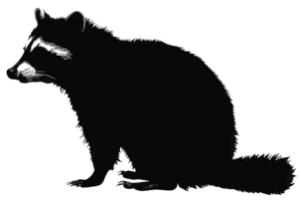Animal Trapper: What You Need To Know
Have you ever wondered what animal trappers do all day? There are many different things that they have to do to be successful. For example, they need to make sure that their traps don’t get stuck or lost by checking them regularly. They also need to know the best way of disposing of animals after catching them, and how long before they can reuse a trap again for trapping more animals. This blog post will explore 10 things that animal trappers do every day!
Read this blog post now! You’ll learn some interesting facts about animal trapping and why it’s so important for our environment. Animal trapping is an essential part of wildlife management because it helps control the population of certain species like raccoons, skunks, opossums, and other mammals who may cause damage if left unchecked. It also helps protect livestock from predators such as coyotes and wolves who prey upon farm animals like chickens, sheep, or cattle. Trapping is not only humane but necessary when dealing with nuisance wildlife issues in residential areas too!
Trapping is a method for catching animals that have been practiced by humans for thousands of years. Trappers use different types of traps to catch their prey, and these traps can either be professional or done as a hobby. Professional animal trappers are responsible for the laws they follow to protect endangered species while trapping; however, individuals who trap just because it’s fun do not have any regulations when doing so.
While there are dozens of methods and traps used to capture fur-bearing animals, the most widely used is the steel-jaw trap. These devices kill 10 million raccoons, coyotes, wolves, bobcats, etc., every year with minimal effort from trappers themselves.
How does a trapper work?
A trapper’s job is to both follow the law and enforce it. They must obey all hunting laws, make sure other hunters/trappers do too, help protect wildlife from each other as well as humans by trapping animals that pose a threat such as an animal who attacks people or threatens livestock.
There are many different opportunities for trappers around the world. These professionals may be hired to protect local populations of wildlife in foreign countries, as well as track wild animals for trophies. Trappers must always follow hunting laws and cannot trap or kill any animal that is protected by law out of season.
To be a successful trapper, one must understand and use humane methods to trap animals. This includes knowing how to operate different types of traps for them not only to pass hunting code standards but also to capture the targeted animal successfully.
While some trappers use taxidermy, others are responsible for preparing the animal carcass by skinning it and preserving its hide. Some things they may do include mounting their trophy on a wall or even stuffing an entire body of the animal to preserve every little bit in all four dimensions.
How does a Trapper’s workplace look like?
Trappers often work in all kinds of weather, including below zero frigid temperatures or hot and dry conditions. They may also face a variety of terrains such as wooded settings or varied climates across the world. Trappers can be out at any hour depending on the animals they are tracking and trapping so their schedule is not always predictable.
Trapping as a career. Would I be a good trapper? Getting into trapping requires a lot of learning and honing skills from childhood to adulthood. There are hunting lessons that cover safety, but generally the most important thing in being safe while trapping is knowing what you’re doing – like where it is legal to hunt or trap, which animals can be trapped, and when, etc.
To become a licensed trapper, one must first meet the requirements of their country or state. Different countries and states have different licensing rules for trappers which means that there is no single way to get started as a professional animal hunter. Furthermore, in addition to being properly certified by your local authorities, you should also be an experienced woodsman with excellent survival skills because hunting can take place anywhere from the mountains of Alaska all the way down south where dense forests cover most parts of Latin America.
- Strong instincts
- Having a sharp vision
- A thorough understanding of safety regulations
- Trapping skills
- Knowledge of how to use poison and bait to catch animals
- Knows a lot about animals and their habitats
- A keen eye for detail
- Knowing where things are on a map and how to use a GPS
- Identifying animal tracks
- Physically fit
- Knowledge of first aid
- Skills for identifying snakes
Below are some examples of what animal trappers catch
Chipmunk
The chipmunk is another member of the squirrel family. They are small, and they have a bushy tail that’s almost as big as their whole body. It takes about eight weeks before newly born chips can go off on their own; however, it also depends if there were any deaths in the litter during birth or miscarriage (so mothers might only produce one baby). As cute little rodents with large tails and adorable expressions to boot, these animals wreak havoc upon your home & property by eating seeds from bird feeders and seedlings growing in gardens/yards. So make sure you contact professionals for chipmunks removal once you suspect this problem!
Snake
The number one reason to call a snake removal professional is that there’s likely more than just the single snake you see. Many homeowners ignore snakes they find in their yard and this can be dangerous for them as well as everyone else on their property. If not handled correctly, these snakes could lead to infestations throughout your home or even bites from venomous species of serpents that pack quite an amount of harmful toxins with every sting!
Raccoon
Raccoons are clever nocturnal animals found in eastern North America. They can open latches, turn doorknobs, climb just about anything, and swim – making them very skilled with nimble hands! Raccoon removal is the best way to remove these creatures from properties because of state laws that must be followed when relocating raccoons.
Stray Dogs
Stray dogs are a common sight in many communities. They’re known as unowned and abandoned pet dogs, not the typical neighbor’s dog from down the street. Wild dogs are often abandoned when people move and can no longer afford to care for them or realize they cannot have a pet. These animals sometimes revert to their wild instincts, which is where animal removal specialists come in. They capture the dog humanely so it doesn’t hurt anyone else while also ensuring its well-being.
Bats
Bats can be your worst nightmare. They are frightening due to their appearance and the diseases they could carry, as well as our society’s portrayal of them in movies.
Bats have a bad reputation which is why they are terrifying: because of how bats look with dark fur, huge ears, and red eyes; plus all the scary things that people say about them like being rabid carriers who suck blood or even make you go crazy!
Bat droppings and urine can lead to serious health issues, so it’s best not to try removing them yourself. Hire a professional who knows the most effective ways of getting rid of these harmful substances from your home.
Skunks
Skunks can be a major pain for homeowners, and it is best to hire professionals if you are experiencing problems. Skunk trapping and removal service companies will work together with the homeowner to trap the animal, relocate it away from your property, as well as preventing more skunks in the future.
Dealing with skunks is a serious problem for any homeowner. They not only carry diseases, but they are also vicious creatures when scared or threatened. Hiring a company to come and remove the skunk can be beneficial because these experts have training in proper trapping techniques and experience removing them safely from your property without harming anyone involved.
Mice
Mice are small mammals that scurry about finding food and building nests to live in. They can become a nuisance, multiplying quickly if left unbothered by humans. If one mouse is spotted it likely means there are hundreds behind the walls of your home which will result in an infestation within a year unless mice removal experts are called upon immediately to help deal with the situation properly before more damage occurs.
Mice can be a very scary and dangerous situation. They carry diseases that put families, pets, and property in danger from all the damage they cause to your home or business. To ensure you don’t have any more unwelcome guests; hiring a mice removal specialist is best so they help come up with an effective plan for how to prevent another infestation in the future.
Porcupines
Porcupines have 30,000 sharp quills on their body. Many people believe that the porcupine shoots its quills at predators as a means of self-defense, but this isn’t accurate. When threatened, it lashes out its tail and embeds these quills in enemies without leaving them behind or harming itself with them!
When removing a porcupine, it’s important to hire the right professional. Porcupines are easily threatened and will attack when they feel like their space is being invaded. If you don’t know much about these animals’ behavior or how to track them down, then you won’t be able to find their home and risk trapping other wildlife along with the target animal! It’s best if professionals handle this as they not only understand where porcupines live but also have experience in catching them without doing further harm.
Coyotes
Coyotes are smaller than the average wolf, but bigger than foxes. They can be found in North America and pose a threat to you and your pets as they cause trouble around neighborhoods often being a nuisance.
Your best bet for removing coyotes from your property is to contact a wildlife pest and removal company. Attempting to trap and remove them on your own can be extremely dangerous, as they carry potentially fatal diseases that can infect you or your pets. Our professionals are trained in safely trapping these animals so we have the right knowledge and tools necessary for relocating them humanely away from residential areas and back into their natural habitats where they belong.
Iguana
Green iguanas are known for destroying infrastructure and damaging property. They build burrows that can lead to sidewalks collapsing, which is bad news on city streets as well as your own walkway. Not only this but they also dig into the foundations of houses or other buildings!
Iguanas aren’t dangerous nor aggressive towards humans; however, their destructive nature means serious damage could be done to your home’s landscape if left untreated!
An iguana removal expert knows that these lizards are often found in residential areas, and they can tell the difference between an unoccupied nest, or one with eggs. They know where to place traps so as not to catch any of your pets (or children), and will remove them from property using their knowledge on how best to complete this task without endangering anyone involved.
Dead Animals
Wild animals all eventually die. They may pass from natural causes, injury or sickness so their last breaths can be found in quiet places like the woods or sometimes even on your property! If you notice a wild animal has died somewhere you don’t want it to be (like inside your home), contact professionals who are trained for dead animal removal as soon as possible.
In Conclusion
If you find a dead animal on your property but can’t locate it, hiring an expert in the removal of deceased animals is the best option. As they know how to identify different wild creatures’ behavior patterns and tracks, which will help them track down where the carcass has been left behind by identifying its smell from afar with their keen sense of smelling skills. However, at times there are situations when tracking down a decaying body via scent alone isn’t possible as one needs professional expertise who knows about various wildlife species behavior patterns and has a good understanding of their footprints for the successful search operation.
You may discover animals living in your home that are a nuisance and can potentially be dangerous. It is important to act quickly if you see signs of wild animal or critter infestation on/in your property.





















